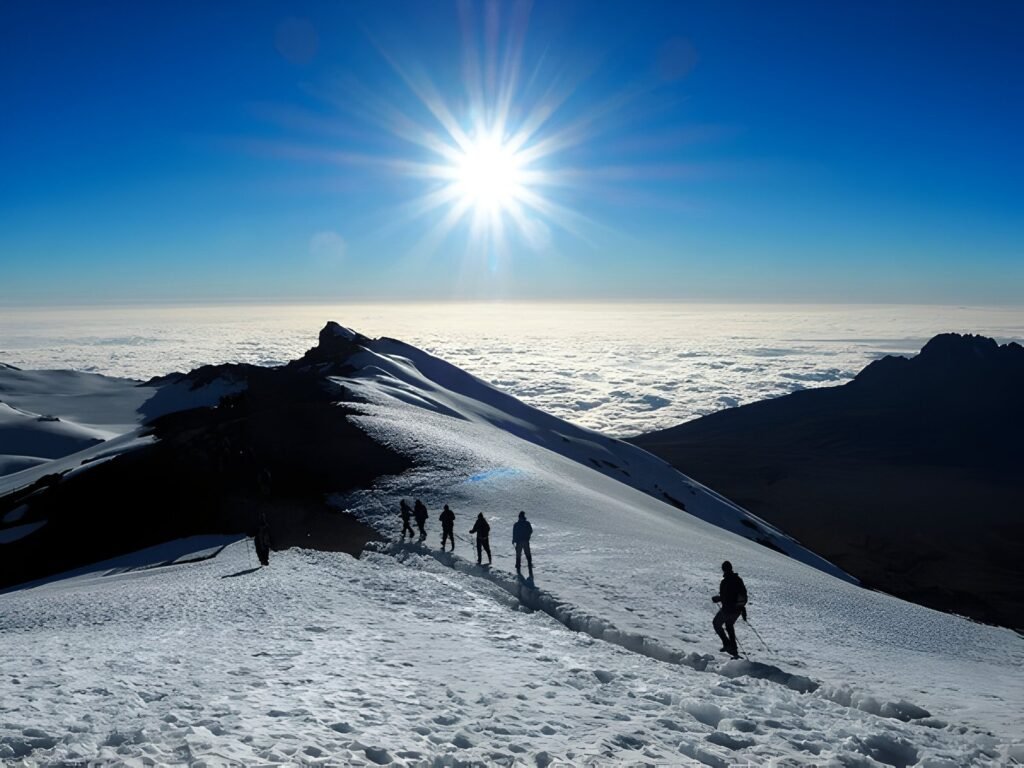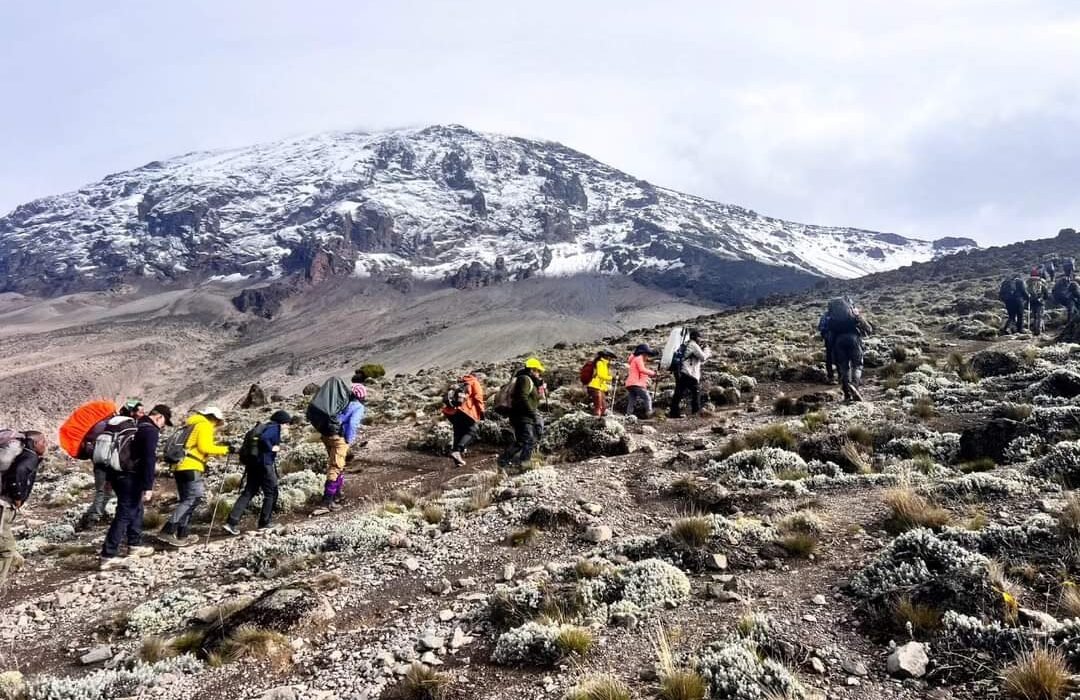Climbing Mount Kilimanjaro is a physically demanding experience that challenges both your endurance and strength. Many trekkers wonder if they will lose weight during the climb due to the physical exertion, high altitude, and long days of hiking. The answer depends on various factors, including your fitness level, diet, and how your body responds to the mountain’s conditions. This guide explores how much weight you might lose, the calories burned on the trek, and how to stay healthy while climbing Kilimanjaro.
Plan your Kilimanjaro climb with expert advice.

1. How Much Weight Do You Lose Climbing Kilimanjaro?
Most climbers experience some weight loss while trekking Kilimanjaro due to the high physical demands of the hike. The combination of intense hiking, reduced calorie intake, and the effects of altitude can contribute to weight loss.
Factors That Influence Weight Loss:
- Calorie Burn: On average, you can burn between 2,000 and 4,000 calories per day depending on the intensity of the trek and your body weight.
- Appetite Changes: Altitude can suppress appetite, leading to reduced food intake.
- Water Loss: Dehydration can lead to temporary weight loss, though this is quickly regained after rehydrating.
On average, climbers can lose between 4 and 10 pounds over the course of the trek, but this varies widely depending on individual metabolism and activity levels.
Read more about the physical demands of high-altitude treks.
2. Calorie Burn on Kilimanjaro: What to Expect
Trekking up Kilimanjaro requires a significant amount of energy, and your body will burn more calories at higher altitudes due to the increased physical exertion and thinner air. The exact number of calories burned depends on factors like your weight, the route you take, and your pace.
Daily Calorie Burn Estimates:
- Moderate Trekking (e.g., Marangu Route): 2,000-3,000 calories per day.
- Challenging Trekking (e.g., Machame or Lemosho Routes): 3,500-4,000 calories per day.
- Summit Night (Uhuru Peak): Up to 5,000 calories due to the intense final push to the summit.
Learn more about how your body burns calories during high-altitude hiking.
3. Effects of Altitude on Weight Loss and Appetite
One of the most noticeable changes at higher altitudes is a reduction in appetite. The thinner air and altitude can cause altitude sickness in some climbers, which can lead to nausea, headaches, and loss of appetite. Even without altitude sickness, many people find they eat less than usual during the climb, leading to a calorie deficit.
Altitude Effects on the Body:
- Appetite Suppression: You may feel less hungry at higher elevations.
- Increased Calorie Needs: Despite the reduced appetite, your body requires more calories to fuel your climb.
- Hydration Is Key: Dehydration can also suppress appetite, so it’s important to stay hydrated.
Read more about the impact of altitude on the body here.
4. Staying Healthy: Balancing Nutrition on Kilimanjaro
While some weight loss is expected on Kilimanjaro, it’s important to focus on maintaining your energy levels and staying healthy throughout the climb. You’ll need to eat regularly to fuel your body, even if your appetite decreases.
What to Eat on the Trek:
- High-Calorie Foods: Choose foods high in carbohydrates and proteins to provide sustained energy. Nuts, energy bars, and dried fruits are excellent choices for snacks.
- Small, Frequent Meals: Eat smaller meals more frequently to help manage appetite loss and maintain energy.
- Stay Hydrated: Drinking water is crucial to prevent dehydration, which can further suppress appetite.
Get more nutrition tips for high-altitude treks.
5. Fitness Benefits of Climbing Kilimanjaro
Climbing Kilimanjaro is not just about weight loss—it’s also a great way to improve your overall fitness. The trek involves long hikes, challenging terrain, and sustained physical effort, which can boost your cardiovascular fitness and leg strength.
Fitness Gains on Kilimanjaro:
- Endurance Improvement: The multi-day hike helps build stamina.
- Leg Strength: Continuous trekking on uphill and downhill paths strengthens the legs and core muscles.
- Mental Toughness: The altitude and long hours on the trail build mental resilience and perseverance.
Discover the physical benefits of trekking in high-altitude environments.
6. How to Prepare for the Physical Demands of Kilimanjaro
Preparing for the physical demands of climbing Kilimanjaro requires building both strength and endurance. Training for Kilimanjaro should include cardiovascular exercises, strength training, and hiking practice on inclined terrain.
Training Tips for Kilimanjaro:
- Cardio: Running, cycling, and swimming to build endurance.
- Leg Workouts: Squats, lunges, and step-ups to strengthen your legs for long hikes.
- Hiking Practice: Regular hikes with a weighted backpack to simulate carrying gear on Kilimanjaro.
Learn more about how to train for a high-altitude trek.
7. Managing Weight Loss and Fatigue on Kilimanjaro
While some weight loss is expected, rapid or excessive weight loss can lead to fatigue and decreased performance on the trek. It’s essential to listen to your body and fuel it properly to avoid exhaustion.
Tips for Managing Fatigue:
- Eat Enough: Even if you don’t feel hungry, try to eat small, nutrient-dense meals regularly.
- Take Breaks: Rest when needed to avoid overexertion.
- Stay Hydrated: Dehydration can increase fatigue, so drink water throughout the day.
Read more tips on managing fatigue during trekking.
8. Final Thoughts: Do You Lose Weight Climbing Kilimanjaro?
Yes, most people lose weight while climbing Kilimanjaro due to the high calorie burn and reduced appetite at altitude. However, the focus should be on staying healthy and fueling your body properly throughout the trek. The climb offers a great fitness challenge, and the weight you lose will be a reflection of the effort you put into conquering Africa’s highest peak.
For more personalized advice on planning your Kilimanjaro trek, visit Kilimanjaro Climb Specialist or Eddy Tours & Safaris.

